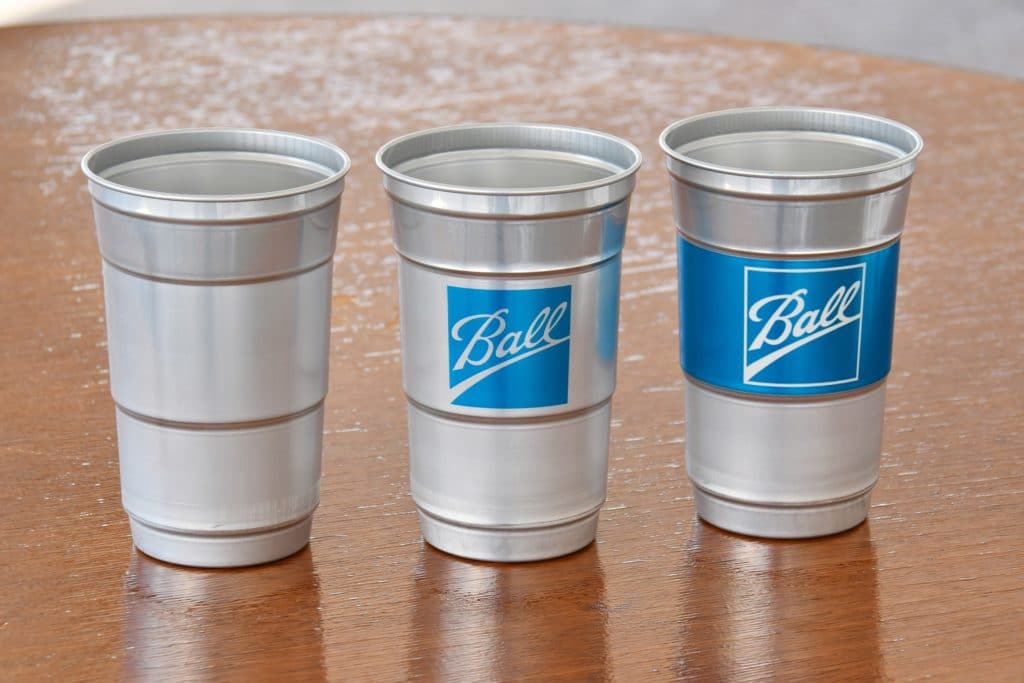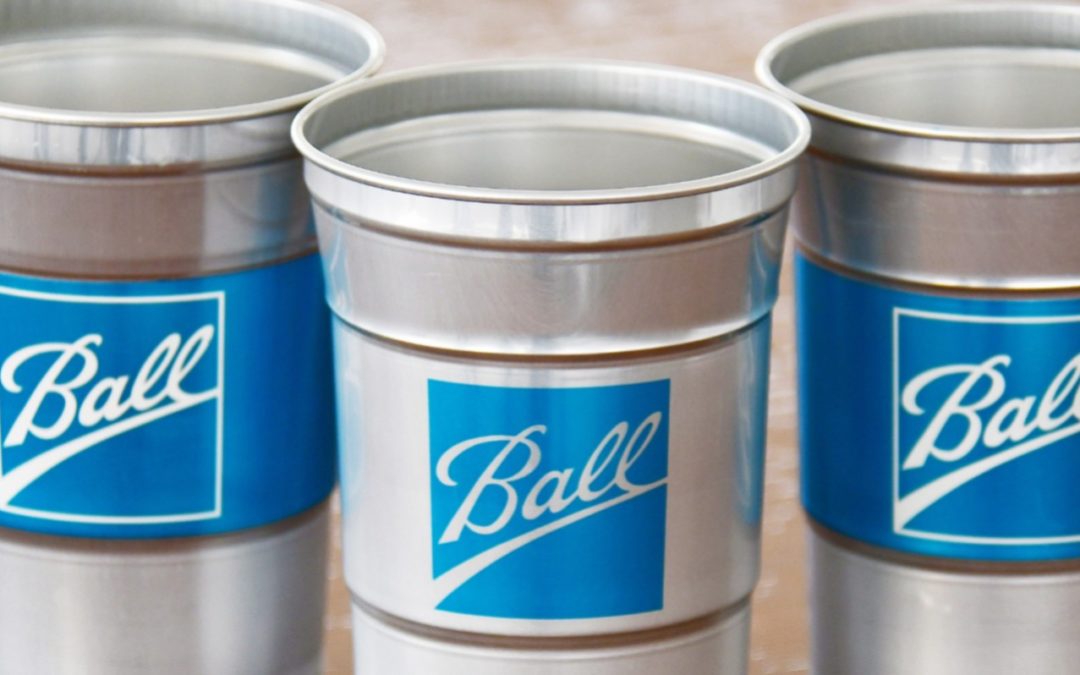A game-changer for the industry, Ball’s latest innovation will debut in September with additional roll out during the fall at major entertainment and sports venues across the U.S.
PRESS RELEASE / Aug. 27, 2019 (Bromfield, CO) – Ball Corporation (NYSE: BLL) today announced the launch of a pilot of infinitely recyclable aluminum cups in the U.S. Ball developed the aluminum cup over the past several years as an alternative to plastic cups for use at home and in other areas where plastic cups are common, including indoor and outdoor venues across the country. The pilot will produce a limited supply of aluminum cups through 2020 for use in such locations, which include entertainment venues and major concessionaires.
“As our customers and consumers increasingly seek sustainable beverage packaging options, the launch of the aluminum cup is a significant moment for our company,” said John A. Hayes, chairman, president and chief executive officer. “It is our responsibility as the leader in aluminum beverage packaging to continuously innovate and provide solutions for our customers. We’re excited to bring the aluminum cup to market and expand the product line next year and beyond.”

Beginning September 2019, Ball will roll out a number of pilots with major venues and concessionaires across the U.S. to replace their plastic cups with aluminum cups. Ball’s research shows that 67 percent of U.S. consumers say they will visit a venue more often if they use aluminum cups instead of plastic cups and that 78 percent of consumers expect beverage brands to use environmentally friendly containers in the next five years.
Related: How to be an Eco-Friendy Craft Beer Drinker – Part 1: The Plastic Problem
Infinitely recyclable and economically valuable, aluminum is the most sustainable beverage packaging material and, like aluminum cans, aluminum cups can be easily recycled. In fact, 75 percent of the aluminum ever produced is still in use today.
In addition to its sustainability and recycling strengths, the aluminum cup is sturdy, durable and cool to the touch, and it can be customized with logos and graphics. The cup is currently available in a 20-ounce size and Ball aims to introduce additional sizes in the future based on market demand. Ball expects to ramp up production in its Westminster, Colorado, innovation facility by the end of 2020, and it looks forward to the opportunity to expand adoption of the cups to restaurants, bars, convenience stores, breweries and retail locations. For more information, please visit www.ball.com/cups.
About Ball Corporation
Ball Corporation supplies innovative, sustainable packaging solutions for beverage, personal care and household products customers, as well as aerospace and other technologies and services primarily for the U.S. government. Ball Corporation and its subsidiaries employ 17,500 people worldwide and reported 2018 net sales of $11.6 billion. For more information, visit www.ball.com, or connect with us on Facebook or Twitter.
Forward-Looking Statements
This release contains “forward-looking” statements concerning future events and financial performance. Words such as “expects,” “anticipates,” “estimates,” “believes,” “targets,” “likely,” “positions” and similar expressions typically identify forward-looking statements, which are generally any statements other than statements of historical fact. Such statements are based on current expectations or views of the future and are subject to risks and uncertainties, which could cause actual results or events to differ materially from those expressed or implied. You should therefore not place undue reliance upon any forward-looking statements and any such statements should be read in conjunction with, and, qualified in their entirety by, the cautionary statements referenced below. The company undertakes no obligation to publicly update or revise any forward-looking statements, whether as a result of new information, future events or otherwise. Key factors, risks and uncertainties that could cause actual outcomes and results to be different are summarized in filings with the Securities and Exchange Commission, including Exhibit 99 in our Form 10-K, which are available on our website and at www.sec.gov. Additional factors that might affect: a) our packaging segments include product demand fluctuations; availability/cost of raw materials and logistics; competitive packaging, pricing and substitution; changes in climate and weather; footprint adjustments and other manufacturing changes, including the startup of new facilities and lines; failure to achieve synergies, productivity improvements or cost reductions; mandatory deposit or other restrictive packaging laws; customer and supplier consolidation, power and supply chain interruptions; potential delays and tariffs related to the U.K’s departure from the EU; changes in major customer or supplier contracts or a loss of a major customer or supplier; political instability and sanctions; currency controls; changes in foreign exchange or tax rates; and tariffs, trade actions, or other governmental actions in any country affecting goods produced by us or in our supply chain, including imported raw materials, such as pursuant to section 232 of the U.S. Trade Expansion Act of 1962; b) our aerospace segment include funding, authorization, availability and returns of government and commercial contracts; and delays, extensions and technical uncertainties affecting segment contracts; c) the company as a whole include those listed plus: changes in senior management; regulatory action or issues including tax, environmental, health and workplace safety, including U.S. FDA and other actions or public concerns affecting products filled in our containers, or chemicals or substances used in raw materials or in the manufacturing process; technological developments and innovations; litigation; strikes; labor cost changes; rates of return on assets of the company’s defined benefit retirement plans; pension changes; uncertainties surrounding geopolitical events and governmental policies both in the U.S. and in other countries, including the U.S. government elections, budget, sequestration and debt limit; reduced cash flow; interest rates affecting our debt; and successful or unsuccessful joint ventures, acquisitions and divestitures, including with respect to the Rexam PLC acquisition, its integration, the associated divestiture, and their effects on our operating results and business generally.


